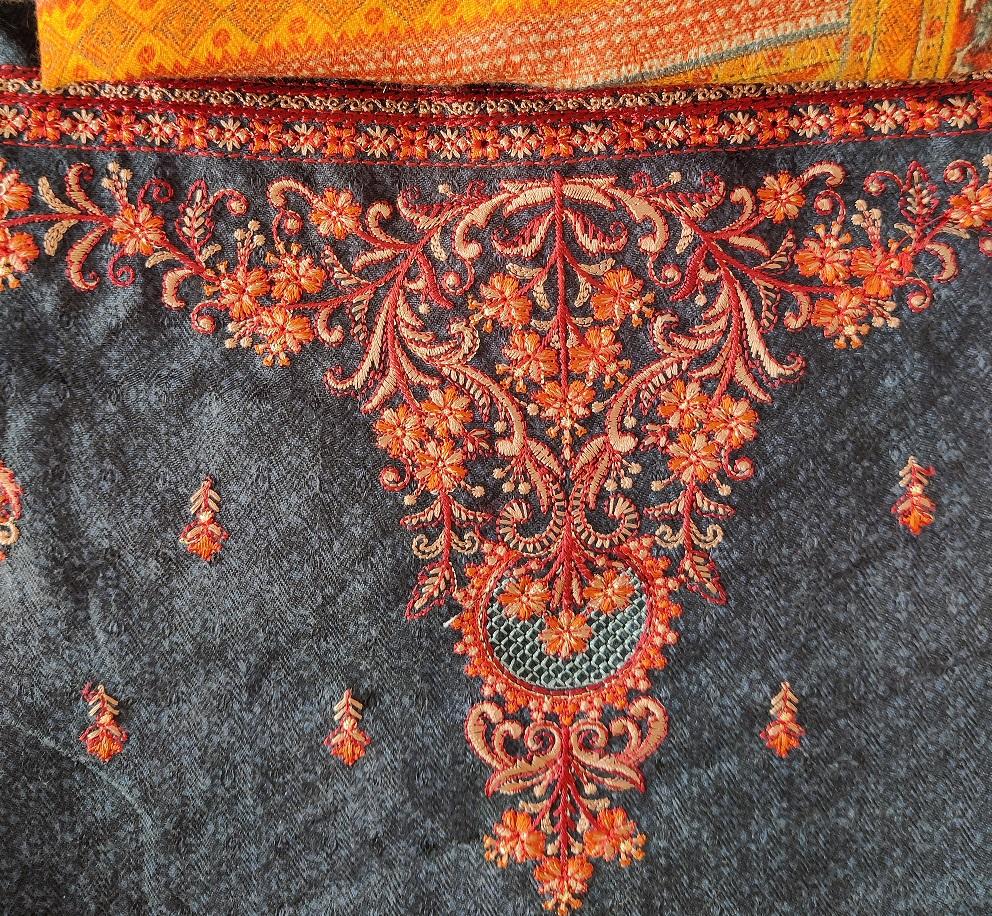Kashmiri embroidery is also known as kashida. Historical evidence suggests that Kashida existed even in the third century BC. Although, it became popular after Mughal took over the land of Kashmir.

History of Kashmiri Embroidery
The handicraft was practiced on a small scale in the beginning. When Mughals came they appreciated the art and took it to the next level. Mughals are known for their love for crafts. Their coming brought many changes along with how art is done and how we look at it.
Mughals expanded the handicraft from the local towns to royalties. They used clothes decorated with Kashmiri embroidery and also encouraged great artists.
Eighth Mughal sultan of Kashmir Zain-ul-Abidin brought Persian weavers to Kashmir during the fifteenth-century to mass-produce the Kashmiri embroidery artwork. This was the time when Persian craftsmanship met Indian craftsmanship. What we have today as Kashmiri embroidery is a mixture of all these cross-cultural interactions.
Types of Kashmiri Embroidery
- Crewel or Aari Embroidery
- Tilla Embroidery
- Amli Embroidery
- Sozni embroidery
Present Status
Due to the cold environment of Kashmir, people wear woolen clothing and shawls are a major part of that clothing. Shawls are used to cover the upper body part, it can be used to cover the head too.
Kashmiri embroidery is done on cotton and silk also but woolen material is the most popular because of the market demands. Pashmina shawls are the softest and most expensive shawls. They are manufactured only in Kashmir and handcrafted with Kashmiri embroidery. Some people buy Kashmiri shawls for Kashmiri embroidery and some people buy them for pashmina shawl.
Handicraft supports a large population of Kashmir. The Kashmiri work is sold not only in India but globally.
